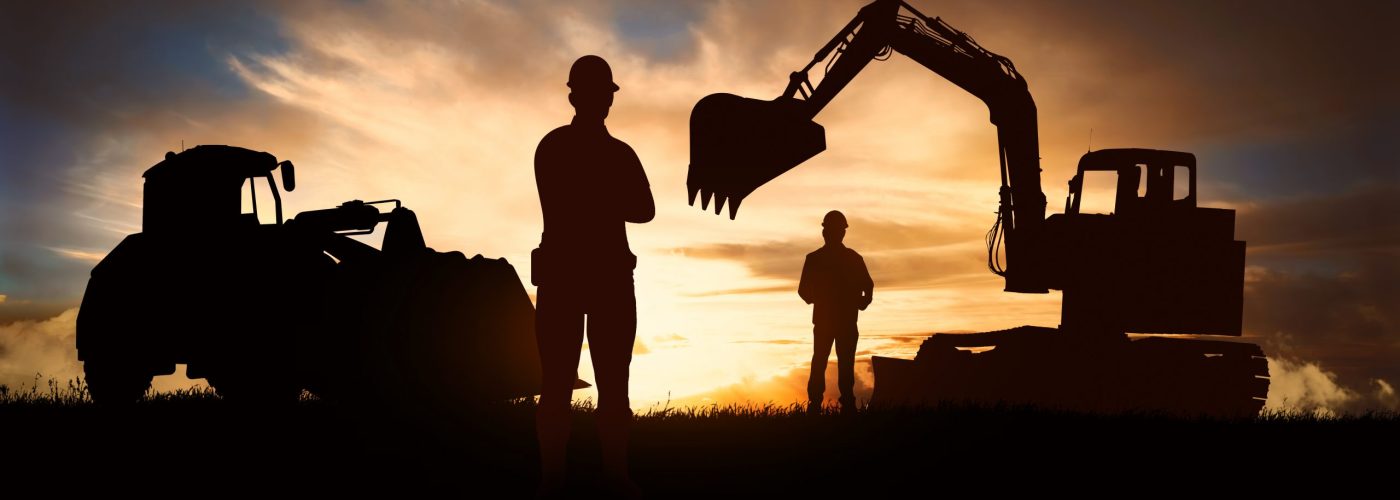Heavy equipment has laid the foundation of great civilizations and modern communities. From the Great Pyramids to the 35-year construction of the Interstate Highway and high-rise buildings, these construction tools dug earth and moved stones to make way for impressive engineering and architectural feats both ancient and modern. Their history is intertwined with the rise of equipment technology, and promises a bright future for the industry – as can be seen in well-established companies such as Fortis Heavy Duty.
Muscle Power in Ancient Times
The Egyptian civilization was the first ever to use heavy equipment in terms of manual and animal labor to operate simple levers, pulleys and cranes. In 2500 BCE Imhotep, an Egyptian chancellor regarded as the world’s first architect orchestrated the building of the Great Pyramids using a system of rollers, ramps and ropes.
The Romans also used this system. Moving huge slabs of stone was done using smooth ramps and rolling pins. Cranes were used to create the Roman arch, and other structures. Vitruvius, a Roman engineer, described early heavy equipment in his treatise known as De Architectura. These were made of wood, and used treadwheel for power.
1800s: Steam, Traction and Hydraulics
Much of what the ancient civilizations used was still in operation until the 1800s, primarily for agricultural purposes – far from super-mechanized engines and heavy equipment undercarriage parts. In 1886, American inventor Benjamin Leroy Holt created a combine steam harvester. Two years later, John Froelich created a gasoline-powered tractor with forward and reverse gears. In 1890 Holt once again produced a steam-powered tractor. These inventions proved beneficial to the agricultural industry as it allowed the transition from animal-power to more powerful steam engines. Apart from the tractor, steam engines also fueled dredgers and steam excavators.
Thomas Aveling also created the traction engine in the mid-1800s and is known as “The Father of the Traction Engine.” His invention has made a lasting impact in the development of succeeding heavy equipment.
1900s: Rise of Heavy Equipment Vehicles
By the 1900s, the second phase of The Industrial revolution was well underway and created a huge demand for heavy equipment in various industries. Track vehicles emerged at this time, with the first successful patent made by Alvin Orlando Lombard in 1901. In later years he would invent the first commercial tractor crawler, the forerunner of today’s tracked construction vehicles.
Heavy equipment was also introduced to the construction industry in the early 1900s. In 1907, the Galion Works built motor and pull graders, steam and internal combustion rollers, wheeled scrapers and hydraulic cranes. Adaptations were made on these vehicles to suit the demands of construction.
The bull graders were introduced in 1920s. It quickly grew in popularity, and in the 1930s it was renamed the bulldozer. This vehicle has since evolved into the bulldozer we know today, hauling boulders and tree stumps from the earth.
Bucket-wheeled excavators also began in the 1920s, as digging machines for the mining industry. They have proved beneficial to surface mining operations over the years.
Dump Trucks were also introduced at this time, also known as tipper or dumper trucks.
1930-1960: Tough Times and Tough Builds
This 30-year period is marked with tough times, from the Great Depression to WWII. There was also notable construction taking place, including the San Francisco Golden Gate Bridge and the beginning of the Interstate Highway.
This is often considered as the boom of the heavy equipment industry, as vehicles became monster-sized to address the demands of the massive interstate construction. The world’s biggest dragline, shovel and 360-ton truck emerged.
1970-1980: Embargo and Recession
Demand for machinery continued to increase during this period, and equipment became more sophisticated. The Arab embargo of 1973 also caused greater demand. It is at this time that safety measures were given for heavy equipment.
1990-2010: Compact and Efficient Vehicles
Machinery now utilized diesel engines, and while this shift improved efficiency, it had negative effects to the environment. Environmental compliance demanded that manufacturers build cleaner and more efficient engines.
The economic recession: the third to hit the heavy equipment industry, has created a trend favoring rent rather than purchase of heavy equipment. Manufacturers are compelled to comply with the specifications rental companies for durability and efficiency, as well to ensure compliance with continuous emission-phase testing from 2001-2008.
2010-2019
The heavy equipment industry is one again seeing growth. Advances in construction equipment came in the form of telematics, electromobility and autonomous machinery. IoT, or the Internet of Things is also employed to increase machine life cycles.





